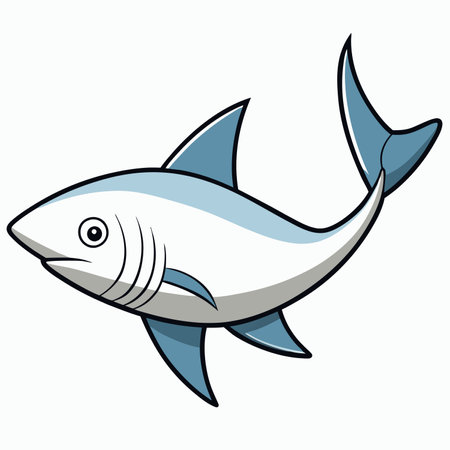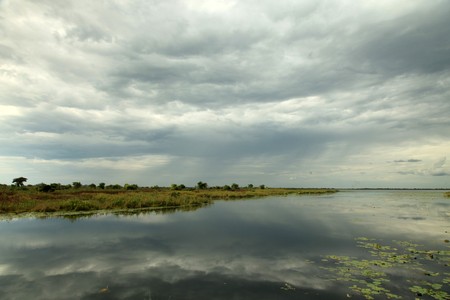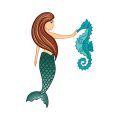1. Introduction to Tarpon Fishing
Tarpon fishing is one of the most exciting and sought-after angling experiences in the United States. Stretching from the crystal-clear waters of Florida to the warm Gulf Coast of Texas, tarpon have captured the hearts of anglers with their size, power, and acrobatic fights. Known as the “Silver King,” these prehistoric fish are not only visually stunning but also incredibly challenging to catch, making them a true trophy for sport fishermen.
What makes tarpon so special? For starters, they can grow to over 200 pounds and live for more than 50 years. Hooking into one means youre in for a thrilling battle—these fish are famous for their explosive jumps, long runs, and relentless strength. Its not uncommon for a fight with a large tarpon to last over an hour, testing both your skill and stamina.
Every year, thousands of anglers from around the globe flock to U.S. coastal hotspots like the Florida Keys, Boca Grande Pass, and the Texas coastline in hopes of landing one of these giants. Whether youre fly fishing in shallow flats or casting live bait near bridges and passes, tarpon offer an unmatched challenge that keeps people coming back year after year.
Why Anglers Love Tarpon Fishing
| Reason | Description |
|---|---|
| Size & Strength | Tarpon can weigh over 200 lbs and are known for their powerful fights. |
| Acrobatics | These fish leap out of the water when hooked, putting on a spectacular show. |
| Challenging Catch | Landing a tarpon requires skill, patience, and sometimes a bit of luck. |
| Scenic Locations | Popular tarpon spots offer beautiful coastal scenery and abundant wildlife. |
Top U.S. Tarpon Fishing Destinations
- Florida Keys: Considered the mecca for tarpon fishing, especially during spring migration.
- Boca Grande: Known for hosting one of the largest annual tarpon congregations in the world.
- Tampa Bay: Offers great access points and consistent action throughout the season.
- Texas Coast: From Port Aransas to South Padre Island, Texas has emerging hotspots for big tarpon.
The Thrill of the Fight
The moment you hook into a tarpon is unlike any other fishing experience. Your reel screams as line peels off at lightning speed. Then comes the jump—a massive silver body launching into the air, twisting and thrashing as it tries to shake free. It’s heart-pounding action that leaves even seasoned anglers grinning ear-to-ear. No wonder some call it “the ultimate saltwater challenge.”
2. Top Tarpon Hotspots: Florida to Texas
If youre chasing the “Silver King,” youre in for a treat across the southern U.S. From Floridas famous flats to Texas warm Gulf waters, each destination offers a unique tarpon fishing experience. Heres a breakdown of the top hotspots and what makes them special.
Florida Keys, Florida
The Florida Keys are often considered the mecca of tarpon fishing. With crystal-clear waters and miles of flats, this region is perfect for sight fishing.
Best Time to Fish:
April through June is prime time, especially during the annual tarpon migration.
Local Tips:
- Try fly fishing on the flats near Islamorada for a real challenge.
- Dawn and dusk are typically the most productive times.
Boca Grande Pass, Florida
Boca Grande is world-famous for its massive tarpon runs and deep-water action. Its often called the “Tarpon Capital of the World.”
Best Time to Fish:
May and June offer peak action when thousands of tarpon migrate through the pass.
Local Tips:
- Use live crabs or threadfin herring for bait.
- A strong tide means better chances—watch the moon phases!
Sarasota & Tampa Bay, Florida
This area offers both inshore and nearshore opportunities to catch big tarpon with less crowd than some other hot spots.
Best Time to Fish:
Late May through July.
Local Tips:
- Troll along beaches early in the morning for rolling tarpon.
- Mangrove edges can also hold juvenile tarpon year-round.
Southeast Louisiana
This lesser-known spot is gaining popularity thanks to its healthy tarpon population and low pressure from anglers.
Best Time to Fish:
July through September.
Local Tips:
- The marshes around Venice are great for targeting tarpon on light tackle.
- Mullet schools attract large numbers of feeding fish—follow them!
South Padre Island, Texas
The Lone Star State may not be the first place that comes to mind for tarpon, but South Padre Island offers solid action during late summer months.
Best Time to Fish:
August through October, especially around jetties and nearshore waters.
Local Tips:
- Trolling with live bait along shipping channels can produce big bites.
- A calm sea surface makes spotting rolling fish much easier.
Quick Reference Table: Best Tarpon Fishing Spots & Seasons
| Location | Best Months | Main Technique |
|---|---|---|
| Florida Keys | April – June | Sight casting with fly or spin gear |
| Boca Grande Pass | May – June | Dropped baits in deep channels |
| Sarasota/Tampa Bay | May – July | Trolling beaches or mangrove casting |
| Southeast Louisiana | July – September | Casting near marshes and bait schools |
| South Padre Island, TX | August – October | Trolling or drifting nearshore waters |
No matter where you go between Florida and Texas, theres a prime spot waiting for you. Just match your timing with local conditions, and youll have a shot at landing one of these legendary fish.

3. Essential Gear and Tackle for Tarpon Fishing
When it comes to targeting tarpon—often called the “Silver King”—using the right gear can make all the difference. Whether youre fishing the flats of Florida or the deeper channels off the Texas coast, choosing equipment suited to American angling styles and readily available products is key. Below is a straightforward guide to rods, reels, lines, and terminal tackle for both conventional and fly fishing setups.
Conventional Tackle
If youre going with a conventional setup, durability and power are essential. Tarpon are known for their explosive runs and acrobatic jumps, so your gear needs to withstand intense pressure.
Recommended Conventional Setup
| Gear Type | Specifications | Suggested Brands/Models |
|---|---|---|
| Rod | 76″ – 8 Medium-heavy to heavy power, fast action | Penn Battalion II Inshore, St. Croix Mojo Inshore |
| Reel | High-capacity spinning or baitcasting reel (6000–8000 size) | Shimano Saragosa SW, Penn Slammer IV |
| Main Line | 30-80 lb braided line | PowerPro, Sufix 832 |
| Leader | 60-100 lb fluorocarbon leader | Seaguar Blue Label, Ande Fluorocarbon |
| Hooks | Circle hooks (5/0 – 8/0) | Eagle Claw TroKar, Owner Mutu Light Circle Hooks |
Fly Fishing Gear
If youre a fly angler chasing tarpon in the U.S., especially in places like the Florida Keys or Boca Grande, your setup should focus on strength and long casting ability. Fly fishing for tarpon is challenging but incredibly rewarding.
Recommended Fly Fishing Setup
| Gear Type | Specifications | Suggested Brands/Models |
|---|---|---|
| Fly Rod | 10-12 weight, 9-foot rod with fast action | Sage Salt HD, Orvis Helios 3D |
| Fly Reel | Large arbor with sealed drag system capable of handling long runs | Tibor Everglades, Hatch Finatic 11 Plus |
| Fly Line | Tropical saltwater floating or intermediate line (WF10F–WF12F) | RIO Tarpon QuickShooter, Scientific Anglers Amplitude Smooth Tarpon |
| Leader/Tippet | Class tippet system: 20 lb class tippet with a 60–80 lb shock tippet (IGFA legal) | Mason Hard Mono Shock Tippet, RIO Tarpon Leader System |
| Flies | Baitfish imitations like Black Death, Cockroach patterns, Toads | Tied on strong hooks like Gamakatsu SL12S or Tiemco 600SP |
Tackle Tips Based on Region
Florida:
The shallow flats around Islamorada and Key West are ideal for sight fishing with fly gear. A stealthy approach using an accurate cast is crucial here.
Lousiana & Mississippi:
The murkier waters call for heavier tackle and bigger baits. Spinning gear with live mullet or crabs works well.
Texas:
The Gulf Coast near Port O’Connor and South Padre Island sees migrating tarpon during summer. Use heavier conventional setups to handle stronger currents and larger fish.
Selecting the right gear helps you stay ready when a hundred-pounder takes your bait or fly. With these setups tailored to U.S. waters and local preferences, youll be well-equipped to battle tarpon from Florida all the way to Texas.
4. Techniques and Strategies for Hooking the Silver King
Tarpon, often called the “Silver King,” are one of the most thrilling game fish in U.S. coastal waters, especially between Florida and Texas. Known for their size, power, and incredible aerial acrobatics, tarpon demand specific strategies to successfully hook and land. Whether youre fishing from a boat or the shoreline, here are practical techniques and tips tailored to American anglers.
Understanding Tarpon Behavior
Before diving into tactics, its crucial to understand tarpon behavior. They are migratory, moving along the coastlines during warmer months. Tarpon tend to roll on the surface to gulp air due to their swim bladder acting as a lung, which makes them easier to spot. Early morning and late afternoon are typically the best times to find actively feeding tarpon.
Casting Approaches
Tarpon can be spooky, so stealth is key. Here are some casting tips:
- Positioning: Always try to cast ahead of a cruising tarpon, allowing your bait or lure to cross its path naturally.
- Distance: Keep your distance; long casts reduce the chance of spooking the fish.
- Timing: Wait until the tarpon opens its mouth before setting the hook — this is known as “bowing to the king.”
Bait and Lure Selection
The right bait or lure can make all the difference. Heres a breakdown of popular choices used across Florida, Louisiana, and Texas:
| Bait/Lure Type | Description | Best Use |
|---|---|---|
| Live Mullet | Lively action attracts big tarpon | Inshore and near passes |
| Pinfish or Crabs | Natural forage for tarpon | Under floats or freelined in calm waters |
| Soft Plastic Swimbaits | Mimic injured baitfish with realistic movement | Sight fishing in clear shallows |
| Spoons & Jigs | Great for covering water quickly | Murky conditions or when searching for fish schools |
| Fly Fishing Flies (e.g., Black Death) | Tied specifically for tarpon action | Popular in Florida Keys during migration season |
The Hook Set: Timing is Everything
When a tarpon takes your bait, resist the urge to set the hook immediately. Wait for the weight of the fish — then drive the hook home with a firm strip set if fly fishing or a powerful upward jerk with conventional gear.
Fighting Techniques: Handling the Aerial Acrobatics
Tarpon are known for their jaw-dropping jumps. Heres how to increase your chances of keeping them on the line:
- Bow to the King: When they jump, point your rod tip toward them to reduce tension and avoid pulling the hook.
- Use Heavy Gear: Spinning or baitcasting reels with strong drag systems help control larger fish.
- Tire Them Out: Let them run but keep steady pressure; rushing leads to broken lines or pulled hooks.
- Avoid Over-Fighting: Prolonged fights exhaust both fish and angler — aim for a balanced approach that brings them in within 20-30 minutes if possible.
Essential Gear Checklist for Tarpon Fishing
| Gear Item | Recommended Specs/Type | Why It Matters |
|---|---|---|
| Rod & Reel Combo | 7-8 ft heavy-action rod with 6000+ size reel | Tough enough to handle large fish and long runs |
| Main Line & Leader | Braid (50-80 lb) + Fluorocarbon leader (60-100 lb) | Braid gives strength; fluoro offers abrasion resistance against gill plates and structure |
| Hooks (Circle Hooks) | #5/0–#8/0 size circle hooks preferred over J-hooks | Easier on fish and better hook-up ratios when used properly |
| Lip Gaff or Landing Tool | No gaffing through body! Use lip tools only | Keeps catch-and-release humane and legal |
| Sunglasses (Polarized) | Copper or amber lenses work best | Cuts glare so you can spot rolling tarpon easier |
A Final Tip: Practice Patience and Respect for the Fishery
No matter where you’re targeting tarpon—whether it’s Boca Grande Pass in Florida, Venice in Louisiana, or Port Aransas in Texas—remember that these iconic fish are part of a treasured sportfishing tradition. Handle them gently if youre releasing, always follow local regulations, and enjoy every second of chasing one of America’s most legendary game fish.
5. Conservation, Licensing, and Fishing Ethics
Tarpon are one of the most iconic game fish in the United States, especially in states like Florida, Louisiana, Mississippi, Alabama, and Texas. While they offer thrilling fishing experiences, its crucial to protect these majestic creatures for future generations. This section covers ethical catch-and-release practices, state licensing requirements, and how you can support tarpon conservation efforts.
Ethical Catch-and-Release Practices
Because tarpon are primarily a catch-and-release species in the U.S., practicing ethical fishing techniques is essential. Proper handling helps ensure the fish survives after release and continues to thrive in its natural habitat.
Best Practices for Releasing Tarpon
- Use circle hooks: These reduce deep hooking and improve survival rates.
- Keep the fish in the water: Avoid dragging tarpon onto boats or docks. It’s safer for both the angler and the fish.
- Avoid excessive fight times: Use tackle heavy enough to land the fish quickly to reduce exhaustion.
- No gaffs or lip-gripping tools that puncture: Use hands or approved grips that won’t injure the fish.
- Revive before release: Hold the tarpon upright in the water and move it gently back and forth to help oxygenate its gills before letting it swim away.
State Licensing Requirements
If youre planning to fish for tarpon across different states, it’s important to know the local regulations. Each state has specific rules regarding licenses, tags, and reporting requirements for tarpon fishing.
Tarpon Fishing License Overview by State
| State | License Required | Special Tarpon Tag? | Citation or Trophy Program? |
|---|---|---|---|
| Florida | Yes (Saltwater Fishing License) | Yes (Tarpon Tag required if harvesting) | No harvest allowed unless record pursuit |
| Texas | Yes (Saltwater Package) | No (1 per day over 85” but discouraged) | No official program |
| Lousiana | Yes (Basic + Saltwater License) | No | No harvest encouraged |
| Mississippi | Yes (Saltwater Fishing License) | No | No special program |
| Alabama | Yes (Saltwater Fishing License) | No | No special program |
The Importance of Conservation Efforts
A healthy tarpon population doesnt just benefit anglers—it supports coastal ecosystems and local economies. Here’s how you can contribute to ongoing conservation efforts:
You Can Help By:
- Joining conservation groups: Organizations like Bonefish & Tarpon Trust work to protect habitats and study migration patterns.
- Avoiding sensitive areas during spawning season: Respect closed zones where tarpon breed.
- Catching responsibly: Follow local guidelines and share best practices with fellow anglers.
- Reporting tagged tarpon: If you catch a tagged fish, report it to help scientists track populations.
Your commitment to ethical fishing and conservation ensures that this legendary sportfish remains a part of American coastal culture for years to come.


